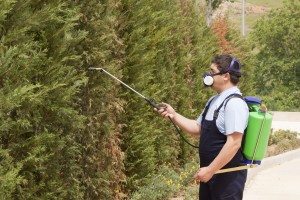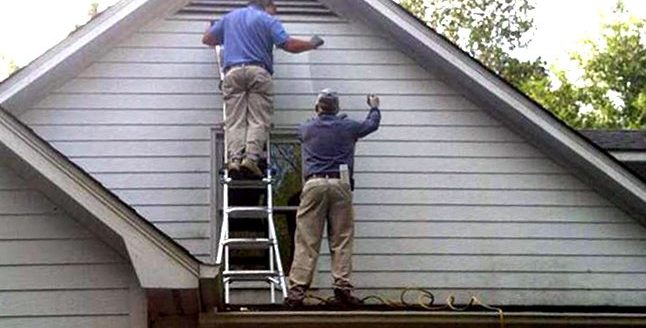When is it Time to Call the Exterminator?
Exterminators provide an invaluable service to homeowners. By removing pests from a property, they help protect both the value of your home and the health of your family members. Although a number of pest issues can be prevented, once pests have moved into the property it’s time to bring in professional help. Ignoring pests with the hopes that they go away on their own can turn into a costly mistake.
Homeowners should check regularly for signs of a pest problem. Early identification reduces the chance of pests causing major damage to the home. Although you should examine all areas of the home for pests, there are certain rooms that are more prone to infestations. Perform a thorough check for pests in the following areas:

- Kitchens
- Bedrooms
- Crawl spaces
- Basements
- Closets
- Garages
Top 5 Signs of a Pest Infestation
When doing any type of cleaning around the house, keep your eyes peeled for any potential signs of a pest invasion. The habits of pests make them easy to stay hidden within the home without detection for prolonged periods of time. The following are the top five signs of a suspected pest infestation without visual confirmation:
Nesting Materials
If you see shredded paper, insulation or fabric, there’s a good chance pests are making your home their new home. Check all the corners and crannies within your home to search for evidence of nesting. Other potential areas for nests include inside cabinets and drawers as well as behind kitchen and laundry appliances.
Pest Droppings
Although a pest’s fecal matter sounds like something that will only turn your stomach, it’s a good idea to get some familiarity with the appearance of different types of pest droppings. For instance, mice have dark colored hardened stools with an elongated shape. If you happen to see signs of these droppings in your house, you can safely assume mice are hiding nearby. Websites like the Internet Center for Wildlife Damage Management provides charts to help identify a variety of pest droppings.
Noise
A number of pests are silent as they creep through the walls or floors of your home. However, larger pests like rodents become noisier at night. If you hear scurrying sounds within the walls of your home, you have confirmation that pests have entered your house.
Structural Damage
A number of pests will damage anything that prevents them from having food or shelter. Gnaw marks on the wall or furniture items, or holes in the wall are major red flags. Any type of damage to indoor or outdoor plants also can typically be attributed to pests. Wood boring pests like carpenter ants damage woodwork and can leave behind piles of sawdust.
Damaged Food Packaging
Pests love to invade anywhere in the home that food is being stored. Ripped or shredded food packages usually mean a pest has tried to find its next meal in your pantry. Keep in mind that any type of food item with tampered packaging should be disposed of immediately.
When to Call in Pest Control Professionals
After finding signs of pests, your first instinct may be to handle the issue on your own. Your reasoning could be to save money and choose inexpensive DIY methods. In some cases when dealing with harmless nuisance pests like flies, it is entirely reasonable to first try DIY strategies to get rid of them. However, in many situations a pest control firm should be called immediately.
Dangerous Pests
If you suspect that pests known for causing bodily harm have invaded your home, do not attempt to remove them without professional assistance. Pests such as wasps, bees, spiders and scorpions will sting when threatened. Rodents are another type of dangerous pest since they have been known to spread a number of serious diseases. Wildlife such as raccoons, bats, and skunks should also never be removed from a home using DIY methods. These animals could be infested with diseases, carry ticks and fleas, and become aggressive when cornered.
Hard to Control Pests
A number of pests have a reputation for being very hard to eliminate. For instance, bed bugs are very hard to detect with hiding spots that include inside furniture pieces, underneath mattresses, under rugs and behind wallpaper. Bed bugs also reproduce at startling rates with one female laying more than 500 eggs in her lifetime. Termites are another pest that are hard to eliminate without an exterminator. Termites use their razor-like jaws to chew through wood 24 hours a day and seven days a week. Not eliminating termites quickly could end up causing a significant amount of property damage in a short amount of time.
Presence of Pets and/or Children
If you have any household pets or children residing in your home, you don’t want to deal with pests using potentially harmful DIY products. Many chemicals found in household insecticides could be poisonous to humans and pets. An exterminator will be extremely knowledgeable about what types of products are safe for use in the home. Furthermore, you don’t want to risk the health of defenseless pets or children if your DIY methods fail to exterminate the pests.
Ineffective Products
DIY products may be your first line of defense against pests in the home. However, if you have used the products and pests are still very much thriving in the home, you need a professional to evaluate and treat your property for active infestations. You could have been using products that are targeting a different pest than the one actually infesting your property. Moreover, exterminators are professionally licensed to use commercial grade products that are not sold in stores.
Correct Applications

Although you could buy an insecticide at any hardware store or big box retailer, you may be clueless over how to apply the bug control product properly. Exterminators know the right products to use, how often to use them, and ways to prevent future infestations. You may also not know what precautions to take when applying the products. For instance, some insecticides may be harmful to the skin or eyes and require protective clothing before applications.
Environmental Impact
Killing any type of pest on sight is a foolish endeavor. Certain pests are actually beneficial for the environment and may even have protections in place through the government. Examples of pests that need special handling include honeybees, praying mantises and ladybugs.
Infestation Recurrences
Very commonly, homeowners use DIY methods and believe they have eliminated the pests. However, in the case that the pests return to the property once again, you should use an exterminator to control the situation.
Not everyone has the inclination to get down and dirty to conquer a pest problem. When you have any underlying fears of bugs or rodents or just don’t want to deal directly with the issue, it is better to just call in an exterminator to put your fears to rest.
Pest Worst Case Scenarios
A pest headache can turn into a pest migraine seemingly overnight. While some pests are just harmless annoyances, other pests can run you literally out of your own home. Without the help of an exterminator, there is a chance that the following scenarios could happen to you.
Extensive Property Damage
Pests can cause major structural damage to a property if left unchecked. They can eat through the floors and walls, chew up wires, and destroy furniture and appliances. For example, termites are blamed for causing more than $5 billion in damage each year. Repair costs typically come out-of-pocket for the homeowner since many insurance policies do not cover termite damage. Other wood-boring insects to be wary of include carpenter ants, powderpost beetles and carpenter bees.
Selling Issues
Many prospective homebuyers hire pest control technicians to check a property for any signs of bugs and rodents. If pests are detected, you will not likely be able to sell the home until the property is confirmed pest-free.
Damage to Personal Effects
A number of pests consume natural fibers found in clothing and furniture pieces. Moth larvae are known culprits for ruining clothing and residing in closets. Carpet beetles also feed on fibers and damage any items made from leather, silk, and wool.
Health Risks
Ignoring a pest problem can create a threat to the health of you and your family members. Rats, mice, mosquitoes, roaches, and other pest can transmit diseases to humans and pets. Allergies are also a concern since family members could be allergic to stinging insects such as bees and wasps. Bed bug bites could also cause a severe allergic reaction. Cockroaches have been linked to worsening asthma symptoms.
Pest Control Challenges
When a pest infestation is ignored, the pest population will only grow. As pests build larger nests and potentially relocate to different areas of the home, they become more difficult to eliminate. Not using an exterminator early on puts you at risk for pest recurrences.
Expense
A large-scale pest problem can be expensive to resolve. Not only do you have to remove the pests, but also repair any damage they may have caused. Multiple follow-up treatments are also likely if heavy infestations are present.
Poor Reputation
Although the presence of pests is not likely your fault, you could feel embarrassed by the infestation. If guests spot a pest at your home, you may feel like you are being judged as having an unclean living space. Commercial properties face even worse repercussions. A business could lose a significant number of customers if word gets out that guests have seen pests on the property.
Carolina Pest Management
Carolina Pest Management has 80 years of pest control expertise. Serving the Carolinas, customers can turn to our expert team members to get rid of pests for good. Contact us and our Charlotte-based team today to learn more about our green and effective pest control strategies.



